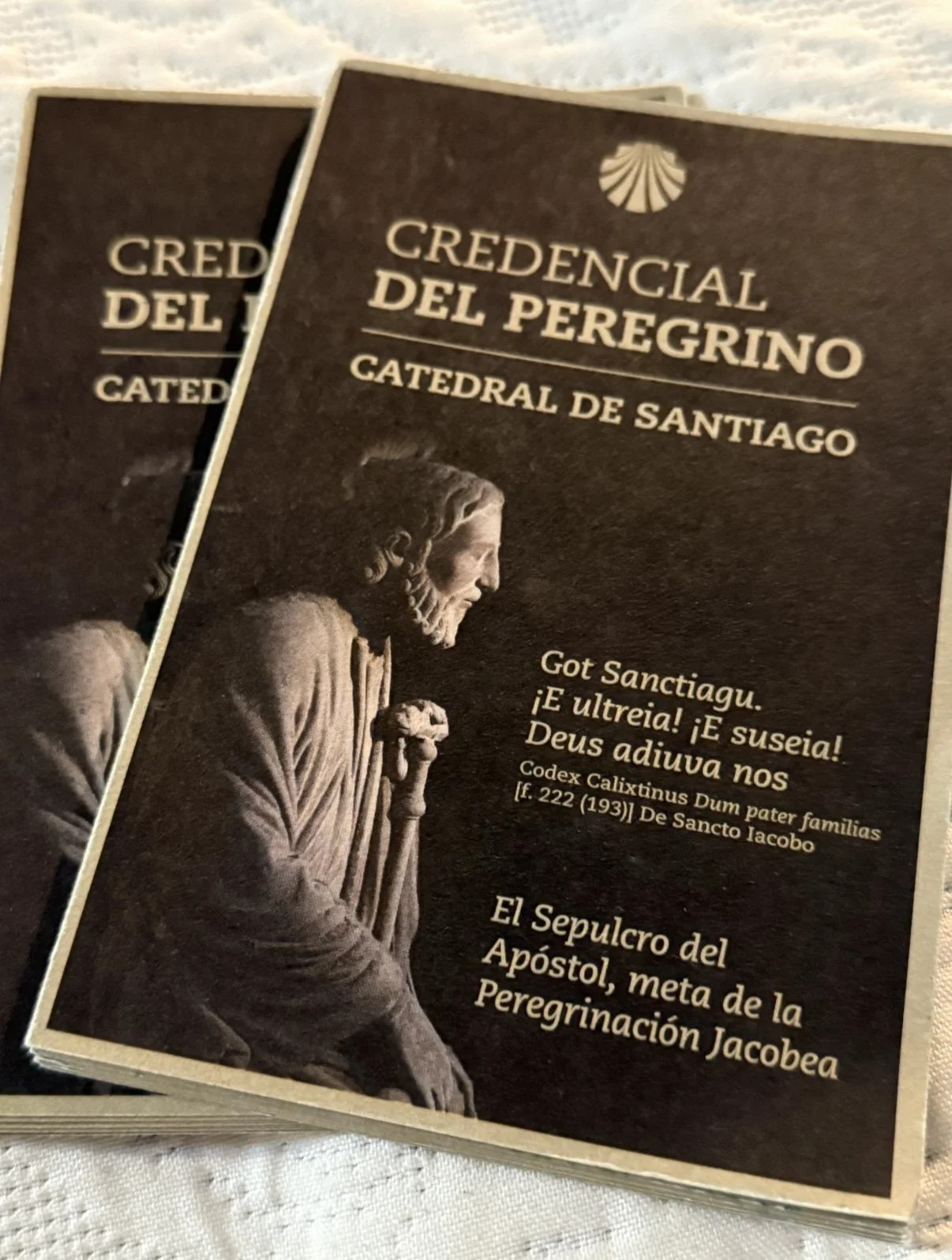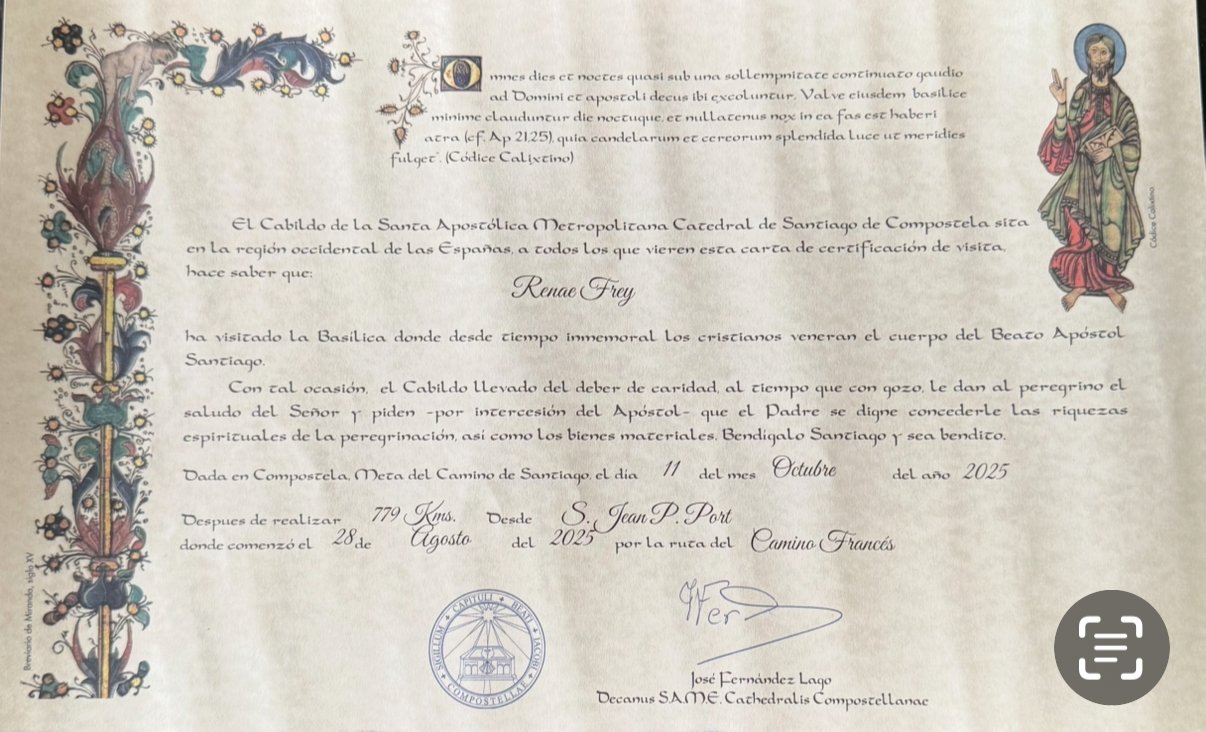How to Get Your Pilgrim Passport and Compostela Certificate in Santiago
The Final Step of the Journey
Walking the Camino de Santiago is a life-changing experience.
Every step, every conversation, every sunrise along the trail builds up to the magical moment when you arrive in Santiago de Compostela.
After days — or even weeks — of walking, there’s one final tradition that marks the official completion of your pilgrimage: receiving your Compostela certificate.
In this guide, I’ll walk you through everything you need to know about:
What the Pilgrim Passport (Credencial) is and why it matters
How to collect stamps along the way
Where and how to receive your Compostela certificate in Santiago
Pro tips to make the process smooth and meaningful
What Is the Pilgrim Passport (Credencial)?
The pilgrim passport, known as the Credencial, is a small booklet that serves as your official record of walking the Camino.
Think of it as a pilgrim passport, stamped at each stop to prove that you completed the journey step by step.
Why You Need It:
Access to pilgrim accommodations like albergues (hostels).
Discounts at certain restaurants or cafés along the route.
Proof of completion when applying for your Compostela in Santiago.
Related Post: 10 Things I Wish I Knew Before Starting the Camino
Where to Get Your Pilgrim Passport Before You Start
You can get your pilgrim passport before you begin your Camino or at the starting point.
Options for Getting a Pilgrim Passport:
From Your Home Country
Many local pilgrim associations sell Credenciales online.
In the U.S., check with the American Pilgrims on the Camino organization.
At Your Starting Point (We got our pilgrim passport at the pilgrim office in St. Jean Pied de Port)
In Spain or France, you can get one at:
Major cathedrals (like St. Jean Pied de Port or Pamplona)
Local pilgrim offices
Some albergues or churches along the route
Cost: Usually between €2 and €5, making it a very affordable part of your journey.
The pilgrim passport for the Camino de Santiago
Collecting Stamps Along the Way
Every time you stop at a café, church, albergue, or town hall, ask for a stamp (sello).
These stamps are not only required for your Compostela but also make a beautiful keepsake of your journey.
Requirements:
One stamp per day until the last 100 km.
In the final 100 km (or 200 km if cycling), you need two stamps per day to prove your distance.
Where to Find Stamps:
Albergues and hotels
Churches and cathedrals
Cafés, restaurants, or shops with a Camino symbol
Tourist information offices
Pro Tip: Keep your Credencial dry and safe.
I carried mine in a zip-lock bag to protect it from rain and sweat.
Stamps on my Pilgrim Passport on the Camino de Santiago.
Arriving in Santiago: Where to Go First
When you arrive in Santiago, your first stop will likely be the Santiago de Compostela Cathedral.
Take a moment to savor the experience — you’ve earned it!
But before you get your Compostela, you’ll need to visit the Pilgrim’s Office.
Santiago de Compostela Cathedral
The Santiago Pilgrim’s Office
The Pilgrim’s Office is where your journey becomes official.
It’s where you present your Credencial and receive your Compostela certificate.
Location:
Rúa Carretas, 33, Santiago de Compostela, Spain
(It’s a short walk from the cathedral.)
Hours:
Typically 9:00 AM to 7:00 PM, but hours can vary, especially during peak season.
Check the latest times on the official Pilgrim’s Office website before you arrive.
Related Post: Choosing the Best Camino Route
Step-by-Step Guide to Receiving Your Compostela
1. Go Early
The Pilgrim’s Office gets busy, especially during summer months or holy years.
I recommend arriving early in the morning to avoid long waits.
2. Take a Number
When you arrive, you’ll receive a ticket with a number, similar to a deli counter system.
You can even check your place in line on their website in real time.
While you wait:
Grab a coffee nearby
Chat with fellow pilgrims
Take photos around the cathedral square
We didn’t have to wait long, so we stood in line and visited other pilgrims.
3. Present Your Pilgrim Passport
When it’s your turn:
Hand over your Credencial to the staff.
They will review your stamps to ensure you meet the requirements:
100 km minimum walked (or 200 km if cycling)
Two stamps per day for the final 100 km
4. Fill Out the Information Form
You’ll be asked for:
Your full name
Your starting point
Your motivation for walking (religious, spiritual, or cultural)
This determines which type of Compostela you receive:
Religious motivation → Traditional Compostela
Spiritual/cultural motivation → Certificate of Welcome
TIP: At some point along your journey, scan the QR code inside the cover of your Pilgrim Passport to register before you get to Santiago. It will save you loads of time.
My Compostela certificate
5. Receive Your Compostela Certificate
The moment you’ve been waiting for!
Your beautifully calligraphed Compostela will have:
Your name written in Latin
The date of completion
An official stamp and signature
Many pilgrims frame their Compostela as a lasting reminder of their journey.
Optional: Distance Certificate
For a small fee (around €3), you can also request a Distance Certificate.
This shows the exact number of kilometers you walked and your starting location — a wonderful extra keepsake.
My Distance Certificate
Tips for a Smooth Experience
Go early or late in the day to avoid crowds.
Keep your Credencial organized — staff appreciate when stamps are easy to read.
Bring ID, such as a passport or driver’s license.
Be patient — this is a meaningful moment for everyone.
Respect the line and celebrate with fellow pilgrims when they receive theirs!
What to Do After Receiving Your Compostela
Once you have your Compostela:
Take a photo with it outside the cathedral (classic pilgrim moment!).
Attend the Pilgrim’s Mass inside the cathedral, if possible. (We did and loved it. It was a very special moment.)
Light a candle or say a prayer of thanks for your journey.
Celebrate with a hearty Galician meal — perhaps pulpo a la gallega (octopus) or tarta de Santiago (almond cake). (We did this, too. Both are delicious.
Related Post: Best Foods to Try on the Camino
Common Questions About the Compostela
Q: Do I need to walk the entire Camino to get a Compostela?
A: No. You must walk at least 100 km or cycle 200 km continuously.
Q: Can I get a Compostela if I used luggage transfer?
A: Yes! Luggage transport doesn’t affect eligibility as long as you physically walk the required distance.
Q: What if I forget to collect stamps?
A: Without proper stamps, you may not receive your Compostela.
Always make it a priority to get your stamps daily. I would get a stamp at the first cafe of the morning, then get my second one when I checked into my room.
Final Thoughts: A Beautiful Ending to a Profound Journey
Receiving my Compostela certificate was one of the most emotional moments of my Camino.
It wasn’t just a piece of paper — it symbolized every step, every challenge, and every blessing along the way.
When I held it in my hands, I realized the Camino isn’t just about reaching Santiago.
It’s about the journey, the people you meet, and the transformation you experience.
Whether you’re walking your first Camino or your fifth, I hope this guide helps you end your pilgrimage with clarity and joy.
Call-to-Action
Ready to plan your Camino?
Download my free Camino Packing Checklist to start preparing today.
Read my guide on Choosing the Best Camino Route to decide which path is right for you.
Follow Camino.Chronicles on Instagram for daily tips, inspiration, and stories from the trail.
Buen Camino, friends!
Renae




